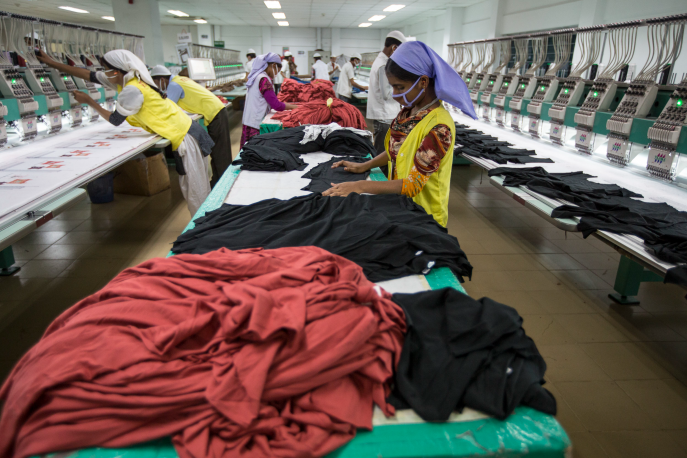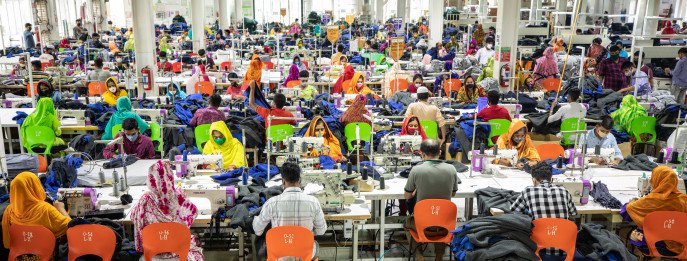By quickly wrapping up the work of the garment industrial park in the Mirsarai economic zone, and offering soft loans to encourage compliant and environment-friendly factories there, we will signal to the world that the country is ready to expand its apparel export
Beating all odds, Bangladesh’s readymade garment (RMG) export has had tremendous growth this year. The country exported $38.52 billion worth of garments in the July-May 2021-2022 period, which was $28.57 billion in July-May 2021-2020.
The growth of our apparel export in these eleven months from July to March was a staggering 34.87%.
Our apparel export witnessed growth both in traditional and non-traditional markets. In July-March of this fiscal year, the country’s apparel export to its biggest destination, the European Union, witnessed a 31.51% increase.

Bangladesh’s second-leading apparel export destination, the USA market, registered 53% year-over-year growth in the first nine months of the current fiscal year. In the same period, our apparel exports to the non-traditional markets (all countries excluding EU, USA, UK, and Canada) increased to $ 4.78 billion from $3.84 billion the previous year.
Throughout the current fiscal, Bangladesh’s apparel export witnessed massive growth. Even though the growth in May 2022 was less compared to previous months, it was still 23.5% more compared to May 2021.
I should not be called over-optimistic if I opine that the positive growth trend of Bangladesh’s apparel industry is here to stay. This is because, in the present world scenario, Bangladesh is the safest destination for apparel sourcing.
Ethiopia has proven to be a failed case for brands and retailers due to the violent outbreaks of inter-racial rivalries and riots. Buyers who turned to Myanmar in the last decade are losing sleep due to the country’s political instability.
The apparel export items of Vietnam are totally different from Bangladesh. And the recent economic crisis in Sri Lanka is also pushing the South Asian country far behind Bangladesh in the competition.
The US-China tug of war is a major reason behind the increase in our apparel exports to the US in recent months. The declaration of a weekly three-day closure of manufacturing plants in a desperate bid to reduce carbon emissions is posing a major setback for the world’s largest apparel exporting country – China.
Moreover, China is also gradually shifting its focus from apparel to high-tech industries. China has steadily accounted for declining shares in the world’s total apparel exports since 2015. Its market shares rebounded to 31.6% in 2020 from 30.7% in 2019.
Obviously, Bangladesh, which occupies only 6.3% global share, could claim a major portion of what China is leaving behind. The apparel buyers and retailers have little alternative to Bangladesh amidst the backdrop of the present global geopolitical situation.

However, we have to do much here to retain the growth potential of our industry. Bangladesh needs to signal to the buyers right now that we are ready to double or triple our apparel export. The government needs to quickly wrap up the work of the garment industrial park in the Mirsarai economic zone.
The apparel entrepreneurs could be offered soft loans to build compliant and environment-friendly factories in the zone, and in other areas as well, to increase their capacity to accommodate the flow of orders in a sustainable manner. The world should be invited to come and see that we are ready and well prepared to seize the opportunity.
Ashikur Rahman Tuhin is the Managing Director of TAD Group and a former Director of Bangladesh Garment Manufacturers & Exporters Association (BGMEA).
Disclaimer: The views and opinions expressed in this article are those of the author and do not necessarily reflect the opinions and views of The Business Standard.
















